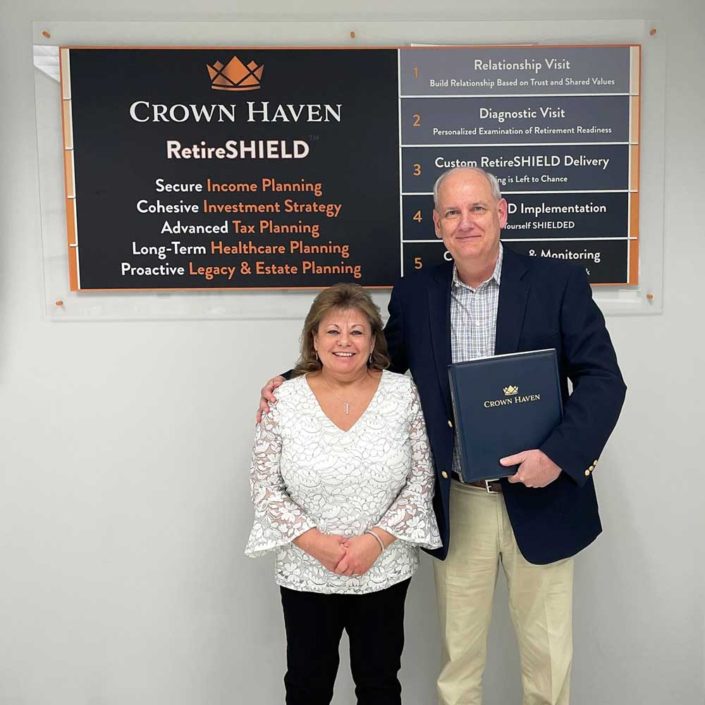How Much Do I Need to Retire in 2024? A Comprehensive Guide
Retirement planning is a pivotal journey, and as I’m sure you already know, 2024 brings its own set of challenges and considerations. Among the myriad questions that retirees or soon-to-be retirees grapple with, one looms large: “How much do I need to retire in 2024?” In this extensive guide, we’ll delve into the factors that influence retirement planning this year. We’ll explore estimating your retirement expenses, understanding safe withdrawal strategies, and offer insights into optimizing your financial security. This guide will provide you with essential information and insights to make informed decisions about your retirement, irrespective of whether you choose to seek professional assistance.
The Key Factors in Your Retirement Savings
Defining Your Retirement Timeline: Age and Goals
Your retirement age and your goals are the cornerstone of your retirement planning. It’s not just about when you retire, but what you want to achieve during your retirement years. Whether you’re aiming for an early retirement filled with travel or planning to work part-time during your retirement, defining your retirement goals is a critical first step.
Visualize your retirement age and lifestyle, taking into account your health, family dynamics, and personal preferences. Your vision for retirement will shape your financial plan.
Taking Stock of Your Financial Foundation: Current Savings and Investments
Before you dive into determining how much you need to retire in 2024, it’s essential to evaluate your current financial position. Begin by assessing your existing savings and investments, including a close examination of your 401(k), IRAs, taxable brokerage accounts, and other assets.
However, it’s crucial to consider the impact of inflation on your savings. Inflation erodes the purchasing power of your money over time. It’s essential to develop strategies to protect your savings against the effects of inflation.
Leveraging Social Security Benefits: Your Safety Net
Social Security is a vital component of retirement income for many individuals. It’s not just about receiving benefits; it’s about optimizing them. Understanding Social Security eligibility, the factors affecting your benefits, and how to make the most of this crucial income stream is essential.
However, keep in mind that Social Security benefits are often not sufficient to cover all your retirement expenses. Your financial plan should complement your Social Security benefits with a well-thought-out savings and investment strategy.
Exploring Additional Income Streams: Pension Plans and Beyond
Pension plans and annuities can provide a reliable source of income during retirement. Consider which option aligns best with your financial goals. Additionally, think about opportunities for part-time work or other supplementary income sources during retirement. Extending your working years can bolster your financial security and potentially provide a renewed sense of purpose.
Estimating Your Retirement Expenses
Building a Strong Foundation: Basic Living Expenses
To retire comfortably in 2024, you must estimate your basic living expenses. This includes:
1. Housing Costs
- Mortgage or rent payments
- Property taxes
- Homeowners or renters insurance
- Maintenance and repairs
2. Healthcare Expenses
- Health insurance premiums
- Medicare expenses
- Prescription drugs
- Out-of-pocket medical costs
3. Food, Transportation, and Utilities
- Groceries and dining out
- Transportation costs (car expenses or public transportation)
- Utilities like electricity, gas, water, and internet
A careful examination of these expenses, with an eye on potential changes during retirement, is crucial. For example, healthcare costs tend to rise with age, so it’s vital to budget for potential medical expenses.
Pursuing Your Dreams: Leisure and Discretionary Spending
Retirement should be a time of fulfillment, and budgeting for discretionary expenses is equally important. Common discretionary expenses during retirement include:
1. Travel and Hobbies
- Vacation and travel expenses
- Hobbies such as golf, gardening, or crafting
2. Entertainment and Leisure Activities
- Dining out
- Tickets to concerts, shows, or sporting events
- Membership fees for clubs or organizations
These expenses contribute to your quality of life during retirement. Proper financial planning ensures you have the freedom to enjoy your golden years to the fullest.
Preparing for the Unexpected: Long-Term Care Considerations
Long-term care can be a significant financial burden in retirement, especially if you or a loved one require assistance with daily activities or specialized medical care. Long-term care services include in-home care, assisted living facilities, and nursing homes.
Proactive planning for potential long-term care expenses is essential. Your options may include long-term care insurance or other financial strategies to mitigate the impact on your retirement savings.
Understanding Safe Withdrawal Strategies
Decoding the 4% Rule: A Blueprint for Financial Security
The 4% rule is a well-known guideline in retirement planning. It suggests that you can safely withdraw 4% of your initial retirement portfolio balance each year, adjusted for inflation, without depleting your savings over a 30-year retirement.
The appeal of this rule lies in its simplicity and the high probability of preserving your savings over a lengthy retirement period. However, it’s important to be aware of both its advantages and limitations.
Advantages of the 4% Rule:
- Provides a straightforward method for calculating retirement withdrawals.
- Offers a high likelihood of sustaining your savings over a 30-year retirement.
Limitations of the 4% Rule:
- Does not guarantee against depleting your savings, especially in poor market conditions.
- May not account for individual circumstances like healthcare expenses or unexpected financial needs.
- Assumes a fixed withdrawal rate, which may not align with your evolving financial requirements.
Adapting the 4% Rule for 2024: Modernizing Your Approach
Retirement planning is not static; it’s dynamic. Economic conditions have evolved since the inception of the 4% rule. To tailor it for 2024, consider current factors:
1. Economic Conditions and Interest Rates
Today’s economic landscape and interest rates significantly impact the sustainability of the 4% withdrawal rate. In a low-interest-rate environment, generating the same income from your retirement portfolio may be challenging. Conversely, higher interest rates may present more income opportunities.
2. Modern Retirement Portfolio Strategies
Retirement portfolios have evolved to include a diverse mix of traditional assets like stocks and bonds, alongside alternative investments such as real estate investment trusts (REITs). This diversification aims to provide a more stable income source.
Real-Life Example of the 4% Rule In Retirement
The Frugal Retiree
- Sarah, a 62-year-old schoolteacher, plans to retire at 65 and lead a modest life.
- She anticipates needing $40,000 per year in retirement.
- Sarah has accumulated $1,000,000 in her retirement accounts without any outstanding debt.
- Using the 4% rule, Sarah estimates her retirement savings will provide $40,000 annually. To achieve her income goal, she may need to extend her working years or explore part-time opportunities during retirement.
These real-life scenarios underscore the importance of aligning your retirement goals with your financial resources. Each individual’s situation is unique, and your retirement plan should be tailored to reflect your distinct needs and aspirations.
Lessons from Successful Retirees
Successful retirees often share common strategies and financial habits. Here are valuable lessons you can glean from their experiences:
1. Commence Saving Early
- The sooner you begin saving for retirement, the more time your investments have to grow.
- Take full advantage of employer-sponsored retirement plans, such as 401(k)s, and contribute consistently.
2. Create a Diverse Investment Portfolio
- Diversification spreads risk and enhances your prospects of attaining financial goals.
- Consider a well-balanced mix of stocks, bonds, and alternative assets that align with your risk tolerance and time horizon.
3. Embrace Responsible Spending
- Practice prudent spending habits and avoid accumulating unnecessary debt.
- Implement budgeting and expense tracking to maintain financial discipline.
4. Continuously Review and Adjust Your Plan
- Life circumstances evolve, and your retirement plan should adapt accordingly.
- Regular assessments of your goals, portfolio performance, and retirement budget are essential.
5. Seek Professional Guidance
- Consult with a financial advisor or retirement specialist to formulate a personalized retirement plan.
- Professional guidance helps navigate complex financial decisions and optimize your retirement strategy.
Strategies to Bridge the Retirement Gap
Catch-Up Contributions and Late-Stage Savings
If you find yourself trailing behind in your retirement savings, several strategies can help you catch up:
1. Maximize Contributions
- Exploit catch-up contributions permitted in retirement accounts for individuals aged 50 and above.
- In 2024, you can contribute an extra $6,500 to your 401(k) and an additional $1,000 to your IRA.
2. Trim Expenses
- Scrutinize your current expenses and identify areas where you can cut back.
- Redirect the funds saved toward your retirement accounts to expedite your savings.
3. Contemplate Delaying Retirement
- Extending your retirement age by a few years can significantly augment your retirement savings.
- It affords you more time to accumulate income and postpones the initiation of withdrawals from your retirement accounts.
Reducing Expenses and Downsizing
Downsizing can be a potent strategy to reduce expenses and free up funds for retirement savings:
1. Sell Your Home
- If your current home is too spacious or costly to maintain, contemplate downsizing to a smaller, more affordable residence.
- The proceeds from the sale can significantly augment your retirement savings.
2. Minimize Debt
- Eliminate high-interest debt, such as credit card balances, to mitigate financial stress and increase disposable income.
3. Embrace a Minimalist Lifestyle
- Assess your possessions and consider decluttering your home.
- A minimalist lifestyle can result in reduced expenses and a simplified retirement.
Delaying Retirement or Pursuing Part-Time Work
Extending your working years or exploring part-time employment during retirement offers several advantages:
1. Augmented Savings
- Extra years of work translate to more time for saving and investing for retirement.
- You can maximize contributions to retirement accounts, constructing a more substantial nest egg.
2. Delayed Social Security Benefits
- Postponing the commencement of Social Security benefits can lead to higher monthly payments when you decide to claim them.
3. Mental and Social Engagement
- Remaining active in the workforce or pursuing part-time employment can provide mental stimulation and social interaction.
Schedule Your Relationship Call
Improve your financial future with Crown Haven’s RetireSHIELD™!
The Importance of Regular Assessments
Retirement planning is not a one-time task; it necessitates ongoing assessment and adjustment. Here’s why regular assessments are indispensable:
1. Adapting to Changing Life Circumstances
- Life events such as marriage, divorce, the birth of children, or the loss of a spouse can significantly influence your retirement plan.
- Regular assessments enable you to adapt to these changes and ensure that your plan remains on course.
2. Responding to Market Fluctuations
- Financial markets can exhibit volatility, impacting the performance of your investment portfolio.
- Periodic evaluations of your portfolio and asset allocation empower you to make necessary adjustments.
3. Evolving Goals and Aspirations
- Your retirement goals may evolve as you approach retirement age.
- Regular assessments allow you to fine-tune your plan to align with your current aspirations.
4. Navigating Tax and Regulation Changes
- Tax laws and retirement regulations can change, affecting your retirement income strategies.
- Staying informed and adjusting your plan accordingly can help you optimize tax efficiency.
Tools and Resources for Retirement Planning
Government and Community Programs
Explore government and community programs that may offer financial support or assistance during retirement:
1. Medicare and Medicaid
- Medicare provides health coverage for individuals aged 65 and above, while Medicaid offers assistance to low-income retirees.
- Understanding eligibility and coverage options for these programs is crucial for managing healthcare costs in retirement.
2. Senior Assistance Programs
- Many local communities provide programs and services tailored to support seniors.
- These may encompass transportation services, meal programs, and recreational activities.
Conclusion
In conclusion, planning for retirement in 2024 involves a thorough examination of your age, savings, and expected expenses. For this reason you may want to look into the services of a financial advisor or more importantly a Retirement Planner like Crown Haven Wealth Advisors.
Remember, your retirement journey is unique, and your plan should reflect your individual goals and circumstances. Whether you decide to seek professional assistance or navigate the path on your own, the key is to stay informed, stay adaptable, and stay focused on securing a comfortable and worry-free retirement.












